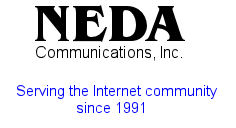RO-ICM: Best Current (2019) Practices For Web Services Development
Best Current (2019) Practices For Web Services Development
Version 0.4
February 12, 2019
http://www.by-star.net/PLPC/180056
Contents
- Part I Overview
- Part II Model And Terminology
- Part III Universality Of Operations – Local/Direct and Remote
- Part IV The Unified ICM Model – Direct ICMs, Remote ICM Invokers, Remote ICM Performers
- Part V Direct ICMs Development Model
- Part VI The Concept Of Remote Operation ICMs
- Part VII Invokers Development Model
- Part VIII Remote Performer ICMs Development Model
Part I |
1 Our Web Services And Remote Operations Model
1.1 Structure Of Web Services Implementation (Remote Operations)
Structure Of Web Services Implementation – Remote Operations
Implemenation Of Remote Operations Can Typically Be Structured As:
- Remote Performer Implementation – http://www.by-star.net/PLPC/180056
- Remote Invoker Implementation – http://www.by-star.net/PLPC/180057
- Direct Operations Implementation – http://www.by-star.net/PLPC/180050
This document focuses on Remote Performer Implementation.
You should read this document alongside the mentioned documents.
Interactive Command Modules (ICM) allow for consistent Direct and Remote Operations.
1.2 Interactive Command Modules (ICM) Direct And Remote Operations
Interactive Command Modules Direct And Remote Operations
Our implementation model for remote operations is based on the model of Interactive Command Modules (ICM).
The Interactive Command Modules Framework allows for a Direct Operation to be split into a Performer Remote Operation module and an Invoker Remote Operation module.
The Interactive Command Modules Framework allows for a Remote Operation to also be used as Direct Remote.
The Interactive Command Modules Framework allows for operations to be mapped to command-line invocations.
2 Obtaining Related Software
Obtaining The Software
Software (Open-Source):
- pip-pkg at PyPi: https://pypi.org/project/unisos.mmwsIcm
- GitHub: https://github.com/bisos-pip/mmwsIcm
3 Related Documents
Related Documents
Interactive Command Modules (ICM) and Players
A Framework For Cohesive Generalized Scripting
http://www.by-star.net/PLPC/180050 — [4]
Remote Operations Interactive Command Modules (RO-ICM)
Best Current (2019) Practices For Web Services Development
http://www.by-star.net/PLPC/180056 — [3]
A Generalized Swagger (OpenAPI) Centered Web Services Invocations And Testing Framework
http://www.by-star.net/PLPC/180057 — [1]
Extending SON To Clouds And Things
GOSSONoT: A Generalized Open-Source Self Organizing Network of Things Platform
http://www.by-star.net/PLPC/180052 — [2]
4 Part Of A Much Bigger Picture – ByStar and BISOS
Part Of A Much Bigger Picture – ByStar and BISOS
This Software is Part Of A Much Bigger Picture.
This Software Is Part Of:
The Libre-Halaal ByStar Digital Ecosystem
And Part Of:
BISOS: ByStar Internet Services OS
This software is primarily being used and developed in that context.
5 In 2019 What Are The Best Current Practices For Building Web Services
5.1 What Do We Mean By: Web Services
What Do We Mean By: Web Services
- machine-to-machine (application-to-application) oriented
- Modeled As Remote Operations
- Based on Web Protocols And Web Data Encoding Standards
- http, xml, json
Frame Notes
5.2 What Do We Mean By: Best Current Practices
What Do We Mean By: Best Current Practices
Technology, Processes, Procedures and Paractices That Reflect Industry Consensus Towards Being:
- Rich and Growing Tools Base And Environment For Development, Testing And Operation
- Easy to Code And Debug In Single Local Process Model
- Consistent Code Generation For Invokers And Performers
- Scalable and Reliable
5.3 Technological Context And Contours
Technological Context
Contours Of Chosen Key Ingridients
-
Web Services (Remote Operations Conetxt)
- Fully FLOSS (Libre-Halaal) Tools and Environment
- Service Specification – Open API 3 (fka Swagger)
- Operations Protocol – http Web Services
- Performer Language – Python 3
- Invoker Language – Python 3
- Developemnt Framework: Interactive Commands Module (ICM)
Frame Notes
6 Web Services Development BCP – Tools Chain
6.1 Web Services Development BCP – Tools Chain – Service Specification
Web Services Development BCP – Tools Chain – Service Specification
Contours Of Chosen Key Tools
- Python Interactice Command Modules (ICM) Framework
- Swagger Tool Chain:
- Swagger-Editor – Used For Looking At Operations Specification – Not For Editing Them
- Swagger-Verifier – (validator-badge) to help verify that Operations-Specification is correct
6.2 Web Services Development BCP – Tools Chain – Invokers And Performers
Web Services Development BCP – Tools Chain
Contours Of Chosen Key Tools
-
Performer Tool Chain:
- Swagger-codegen – Only Performer Side Python3 feature is used – Flask+Connexion+ServerStubs
- Invoker Tool Chain:
- Swagger-UI – Auto included in every service
- Python Bravado – Equivalent of Invoker Codegenartor But Better
- unisos.mmwsIcm – rinvoker.py – Batch equivalent of Swagger-UI
- unisos.mmwsIcm – ro.py – invoke-specification – invoke-verification – invoke-reporting
Part II |
7 Remote Operations Model And Terminology
7.1 Remote Operations Model And Terminology – Data Communications Vs Software Engineering
Model And Terminology – Data Communications Vs Software Engineering
ROSE: Remote Operations Services Element
- Remote Operations Services Model And Terminology Was First Introduced In 1988 By Data Comm Experts
- Models and Terminology Inferior To It Has Been Used By Software Engineers (Hacks) – And Have Become Mainstream
Best Practice is to use proper, complete and correct model and terminology with discipline.
We will be using ROSE’s model and terminology of Operations (with some augmentations), Invokers and Performers – not clients and servers.
7.2 Remote Operations Terminology Vs Web Services Terminology
Remote Operations Terminology Vs Web Services Terminology
See ROSE: Remote Operations Services Element – X.219 For Details
| Remote Operations Terminology | Web Services Terminology |
| Service Specification | Swagger File – json swagger url or yaml swagger file |
| Operation (OpId + Arguments + Results) | url (paths) |
| Invoker And Performer | Client And Server |
| Arguments | Requests |
| Results and Errors | Responses |
7.3 Adding REST To ROSE
Adding REST to ROSE
Remote Operations Services Element and Representational State Transfer
The basic concepts of ROSE (Remote Operations Services Element) can easily be augmented by the basic concept of REST (Representational State Transfer).
In the Web Services context we can go from Remote Operations to REST’s object, method model by introducing the notion of “RO-DestSap” (Remote Operation Destination Service Access Point).
8 Outline:
Outline
- Universality Of Operations – Local/Direct and Remote
- Unified ICM Model – Direct Operations ICMs (DO-ICM) and Remote Operations ICMs (RO-ICMs)
- Direct ICMs Development Model
- Model Of Remote Operations ICMs
- Remote Invoker ICMs Development Model
- Remote Performer ICMs Development Model
Part III |
9 Parallels Between Command Line Invokations And Remote Operation Invokation
Parallels Between Command Line Invokations And Remote Operation Invokation
Options And Arguments Vs Parameters
Command Line:
- Options
- Args
Remote Operations:
- Parameters
10 A Unified Model For Python Invokations, Command-Line Invokations And Remote-Op Invokations
Development Workflow
Python Invokation Inputs: Complex Arguments
Python Invokation Outputs: Complex Return Values
Command-Line Invokation Inputs: Options And Args
Command-Line Invokation Outputs: stdout, stderr
Remote-Operation Invokation Inputs: parameters
Remote-Operation Outputs: Results, Errors
You just write your python code, the CLI and Remote Operations are fully auto generated.
Part IV |
11 Benefits And Powers Of The ICM Unified Model
Benefits And Powers Of The ICM Unified Model
Most of your development life-cycle is in a local and single process environment.
At will you map to command line.
At will you can split the functionality to remote-operations (Web Services).
You can switch between the three models by maintaining a single code base.
12 Development Workflow
Development Workflow
- Develop Your ICM As An Ordinary Local Command Line Module – With ICM Parameters And Args
- Use/Test Your ICM On Command Line Or With A ICM-Player
- Augment Your Local ICM With Swagger Annotations – Similar To Java’s @Api
- Create A Swagger Operations-Specification And Validate It
- Pass The Swagger Operations-Specification Through codegen which will use the ICM’s Operations
- Run The Performer As A Service
- Point the ICM-Invoker To The Performer’s Operations-Specification
- Build Your Application Based On The ICM-Invoker Cmnds
13 Overview Of Continuity Of Direct, Performer and Invoker ICM Models
Overview Of Continuity Of Direct, Performer and Invoker ICM Models

Figure 1: Web Services Interactive Command Module (ws-icm) Overview
Frame Notes
13.1 Direct Operations ICM (DO-ICM) Model
ICM Performer Responders
ICM-Commands are directly invoked.
In a single process model where parameters and arguments and results are through the command line and file system.
13.2 ICM Performer Model
ICM Performer Model
Based on the ICM’s self contained info, ICM-Performers can be launched to respond to Remote Operation Invokations.
The ICM Performer is auto generated from the ICM code.
13.3 ICM Invoker Model
ICM Invoker Model
Based on the Swagger file, The Remote-Invoker Maps the Swagger file onto command line.
Part V |
14 Direct ICMs Development Model
Direct ICMs Development Model
Basic Elements Of Direct ICMs
- Cmnd Method
- Cmnd Params
- Cmnd Args
- Interactivity or Not
- Cmnd Outcome
15 Python ICM-Command Concept Vs Python Functions
Python ICM-Command Concept Vs Python Functions
The Python ICM-Command Class (icm.Cmnd) includes:
Cmnd.cmnd :
Cmnd.Args:
Cmnd.Params:
Cmnd.WebSvcApi:
Full description of ICM is provided in PLPC-180050
16 About ICM Players
About ICM Players
Based on the ICM’s self-contained info, ICM modules can be used at cmnd-line or through auto-generated User-Interfaces.
17 About ICM Libraries (Collections Of Reusable ICMs)
About ICM Libraries – Collections Of Reusable ICMs
ICM “Commands” can be included in ICM-Libraries which can then be combined.
Part VI |
17.1 Overview
The Concept Of Remote Operation ICMs
Remote Operation ICMs (RO-ICMS) are governed by RO-Specifications (Swagger Spec, OpenApi Spec)
RO-Specifications are the axis around which everything revolves.
RO-Specifications are the “service contract” that permit language bindings for invokers and stable performer evolution.
18 Three Ways Of Specifying The RO-Specification (Swagger-file)
Three Ways Of Specifying The RO-Specification
- Design and write the Service Specification in full in one place – e.g., with swagger-editor. Then use code-generators for both performer and invoker.
- Design and write the Service Specification in pieces along with implementration (a la dropwizard). Then publish the aggregated swagger for code-generation of invokers. Performer is framework driven – no generated code.
- Design and write the Service Specification in pieces along with implementration for single process usage. Then generate the aggregated Service Specification for use with code-generators for both performer and invoker.
Method (3) is that of Web Services ICM.
Web Services ICM With Swagger Code Generators

Figure 2: Web Services Interactive Command Module (WS-ICM) Using Swagger Code Generators
Frame Notes
19 RO Authentication And Authorization
RO Authentication And Authorization
- Bearer Tokens
- Auth Library
Part VII |
20 A Generalized Swagger (OpenAPI) Centered Web Services And Invokations Testing Framework
A Generalized Swagger (OpenAPI) Centered Web Services And Invokations Testing Framework
PLPC-180057
Invokers Development Model is described in:
A Generalized Swagger (OpenAPI) Centered Web Services Invocations And Testing Framework
http://www.by-star.net/PLPC/180057 — [1]
Part VIII |
21 Model And Process Of Building Performers With Swagger Code Generators
Model And Process Of Building Performers With Swagger Code Generators
The general process and model of building a RO-Performer service involves:
- Obatin Or Create A Swagger File (svcSpec)
- With The Swagger File, Generate Python-Flask Code (svcSpec -> PerformerCodeGen)
- Add controllers For Each Operation (PerformerCodeGen + controllerCode)
- Wrap and run the performer in a web server (Performers+Flask+Connexion+Apache+wsgi)
– Other choices for Apache-wsgi include:
- nginx
- uWSGI
22 Common Ways Of Building ICM Based Performers
Common Ways Of Building ICM Based Performers
- Custom Performers With DO-ICM Controllers
- ICM Derived Performers
- Database Oriented ICM Performers
23 Custom Performers With DO-ICM Controllers
Custom Performers With DO-ICM Controllers
For Direct-Operations ICM Apps, The Stack Is:
- Existing Swagger File (svcSpec)
- Direct-Ops ICM (doIcm-ops)
- Swagger Python-Flask Code Generation (svcSpec -> PerformerCodeGen -> doIcm-ops)
- Flask
- Connexion
- Apache-2 wsgi
24 ICM Derived Performers
ICM Derived Performers
For Direct-Operations ICM Apps, The Stack Is:
- Direct-Ops ICM (doIcm-ops)
- DO-ICM Auto Swagger File Generation (doIcm -> svcSpec)
- Swagger Python-Flask Code Generation (svcSpec -> PerformerCodeGen -> doIcm-ops)
- Flask
- Connexion
- Apache-2 wsgi
24.1 Database Oriented ICM Performers
Database Oriented ICM Performers
For Database Oriented Apps, The Stack Is:
- Direct-Ops ICM (DO-ICM)
- DO-ICM Auto Swagger File Generation (doIcm -> svcSpec)
- Swagger Python-Flask Code Generation (svcSpec -> PerformerCodeGen -> doIcm-ops)
- Sqlalchemy
- Mysql
- Flask
- Connexion
- Apache-2 wsgi
25 With The Right Tools, It Is Very Easy To Build RO-ICMs Based On DO-ICMs
With The Right Tools, It Is Very Easy To Build RO-ICMs Based On DO-ICMs
- Build And Test Your DO-ICMs
- Generate Swagger Files For Your DO-ICMs
- Convert Your DO-ICMs to Performer-RO-ICMs
- Use The Invoker-RO-ICMs Framework To Test The Remote Performer
- Use The Invoker-RO-ICMs Framework Build Your Invoker Apps
References
- [1]
- " Mohsen BANAN ". " a generalized swagger (openapi) centered web services testing and invocations framework ". Permanent Libre Published Content "180057", Autonomously Self-Published, "December" 2018. http://www.by-star.net/PLPC/180057.
- [2]
- " Mohsen BANAN ". " extending son to clouds and things gossonot: A generalized open-source self organizing network of things platform ". Permanent Libre Published Content "180052", Autonomously Self-Published, "December" 2018. http://www.by-star.net/PLPC/180052.
- [3]
- " Mohsen BANAN ". " remote operations interactive command modules (ro-icm) best current (2018) practices for web services development ". Permanent Libre Published Content "180056", Autonomously Self-Published, "September" 2018. http://www.by-star.net/PLPC/180056.
- [4]
- " Neda Communications Inc". " interactive command modules (icm) and players a framework for cohesive generalized scripting a model for gui-line user experience ". Permanent Libre Published Content "180050", Autonomously Self-Published, "July" 2017. http://www.by-star.net/PLPC/180050.





